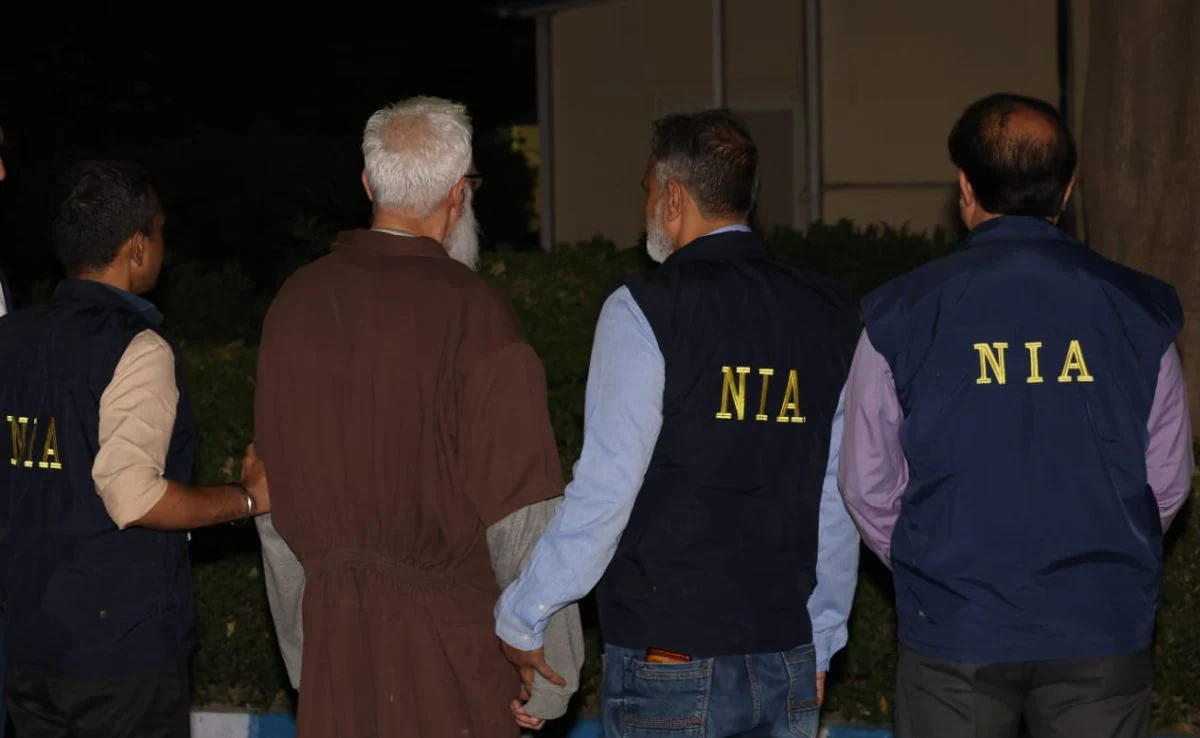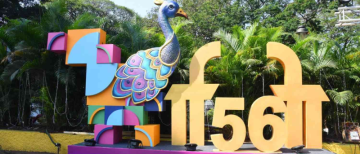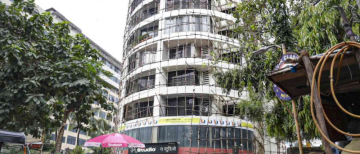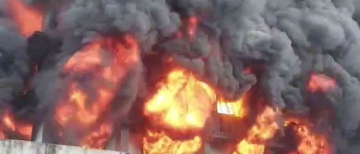More than 16 years after the deadly 26/11 Mumbai terror attacks that left 166 people dead, one of its key conspirators — Tahawwur Hussain Rana — has finally been extradited from the United States to India. His return marks a major diplomatic and investigative breakthrough for Indian authorities, who have long pursued justice for the victims of the 2008 carnage.

Who is Tahawwur Rana and Why Was He Extradited?
Rana, a 64-year-old Pakistan-born Canadian national, was arrested by the FBI in the U.S. in 2009 for his role in providing support to terrorist organizations, including in connection with both the Mumbai attacks and an aborted plot against a Danish newspaper. While he was convicted in the U.S. for supporting terror outfits, his extradition to India was delayed by years of legal appeals.
However, all legal avenues were exhausted after the U.S. Supreme Court rejected his plea against extradition in early April 2025. On April 10, a special flight landed in Delhi carrying Rana, who was taken into 18-day custody by the National Investigation Agency (NIA). His arrival was marked by tight security, including SWAT teams, bulletproof convoys, and public transport curbs around the NIA office.
VIDEO | Police personnel and vehicles stationed outside Palam Air Force Station, Delhi.
Tahawwur Rana, a key accused in the 2008 attacks, is being brought to India on a special flight after his last-ditch attempt to evade extradition failed as the US Supreme Court justices… pic.twitter.com/V1wnPpJm1p— Press Trust of India (@PTI_News) April 10, 2025
Role in the 26/11 Mumbai Attacks
Investigations by Indian agencies have detailed how Rana was a critical enabler for Headley and the Lashkar-e-Taiba (LeT):
-
Reconnaissance Support: Rana provided logistical cover for Headley by opening a branch of his immigration firm in Mumbai in 2006.
-
Visit to India: He visited India from November 11 to 21, 2008, staying in a five-star hotel. The attacks began just five days later, on November 26.
-
Travel Footprint: Accompanied by his wife Samraz Rana Akhtar, Rana also traveled to Delhi, Agra, Kochi, Hapur, Ahmedabad, and Mumbai in the lead-up to the attacks. Officials suspect possible reconnaissance for broader terror plots beyond Mumbai.
-
Communication with Headley: Supplementary chargesheets cite emails in which Headley sought instructions from Rana. These establish Rana as a key conduit between Headley and Pakistan’s Inter-Services Intelligence (ISI).
-
Wider Conspiracy: Rana is accused of collaborating with Lashkar-e-Taiba (LeT), Harkat-ul-Jihadi Islami (HUJI), and Pakistan-based co-conspirators in orchestrating the 26/11 attacks.
Extradition from the United States: A Diplomatic Win for India
Upon landing in India, Rana was medically examined and immediately produced before the Patiala House Court in Delhi in in-camera proceedings. He faces charges ranging from waging war against India, murder, conspiracy, forgery, and supporting banned terrorist organizations.
A high-security ward at Tihar Jail has been readied for Rana, though he will remain in NIA custody for 18 days for interrogation.
He will be interrogated at the NIA headquarters on Lodhi Road, with security arrangements in place at Tihar Jail, where a high-security ward has been prepared for his detainment.
Timeline of Legal Proceedings
-
Arrest: Rana was first arrested by the FBI in October 2009 for involvement in both the 26/11 attacks and a planned strike on a Danish newspaper.
-
Conviction in US: He was convicted in the US for aiding terror activities and remained incarcerated while resisting extradition.
-
Legal Battle: His extradition case was contested over several years. The turning point came in May 2023, when a US Magistrate Court accepted India's plea, rejecting his double jeopardy defense.
-
Final Blow: On April 4, 2025, the US Supreme Court dismissed Rana’s final review petition, paving the way for his transfer to India.
Diplomatic & Legal Collaboration
-
The National Investigation Agency (NIA) hailed the extradition as a major victory, noting it followed years of persistent diplomatic efforts involving India’s Ministry of Home Affairs, the Ministry of External Affairs worked closely with:
-
The US Department of Justice (USDoJ)
-
The US Sky Marshal
-
Indian intelligence agencies and the NSG (National Security Guard)
-
In a statement, the NIA called the extradition the result of “years of sustained and concerted efforts.”
In a formal statement, the NIA said:
“With the active assistance of USDoJ, the US Sky Marshal, and Indian intelligence agencies, Rana has finally been brought to face justice in India.”
A team from the National Investigation Agency (NIA) reached Patiala House Court to produce 26/11 terror accused Tahawwur Rana.
Visuals by @Nirbhaya99
Read Morehttps://t.co/9nUVdJgxNt pic.twitter.com/JPCSOINlc9— The Indian Express (@IndianExpress) April 10, 2025
Arrival in India: High-Security Operation
-
Flight Details: Rana arrived in Delhi on a special aircraft late on Wednesday, landing at Palam Air Force Station at 6:31 pm.
-
Security Measures:
-
Multiple Delhi Police PCR vans, a bullet-proof escort vehicle, and SWAT personnel from the Special Cell were deployed.
-
Media and public were cleared from the Patiala House Court premises ahead of his production.
-
Security was ramped up across Palam Airport, NIA headquarters, and Patiala House Court, with Delhi Metro gate no. 2 near JLN Stadium closed.
-

Prosecution Team
India’s legal offensive will be led by some of the most seasoned criminal lawyers:
-
Dayan Krishnan: Senior Advocate who led India’s extradition arguments in the US court since 2010.
-
Narender Mann: Special Public Prosecutor, known for representing the CBI in the Delhi High Court.
-
Sanjeevi Sheshadri and Sridhar Kale: Part of the NIA’s legal team.
Pakistan Distances Itself
Pakistan’s Foreign Office has officially distanced itself from Rana, stating:
“He is a Canadian national and has not renewed his Pakistani documents for over two decades.”
This follows mounting pressure on Pakistan to take accountability for state complicity in the Mumbai attacks—especially as more revelations are expected from Rana’s interrogation.
VIDEO | Security tightened outside NIA headquarters in Delhi where Mumbai terror attacks accused Tahawwur Hussain Rana has been kept.
The NIA Special Court at Patiala House has sent Rana to 18-day NIA custody. The anti-terror agency had produced Rana before the NIA Special… pic.twitter.com/uyUNshOD6S— Press Trust of India (@PTI_News) April 11, 2025
What Comes Next?
Rana’s custodial interrogation is expected to focus on:
-
His communications with David Headley
-
Funding and logistical channels for the 26/11 plot
-
Help trace funding networks, communications, and the exact extent of ISI’s and LeT's involvement
-
Any additional co-conspirators operating in or outside India
-
Possible new leads about terror targets beyond Mumbai
-
Reveal previously unknown links between Pakistan’s state actors and terror operatives.
The charges against Rana in India include:
-
Waging war against the nation
-
Criminal conspiracy
-
Murder
-
Forgery
-
Providing material support to terror organizations
The extradition of Tahawwur Rana is more than just a diplomatic victory; it represents a long-awaited moment of justice in one of India’s darkest chapters. As the legal process unfolds and investigations deepen, the hope remains that all perpetrators of the 26/11 attacks—no matter where they hide—will ultimately be held accountable.
With inputs from agencies
Image Source: Multiple agencies
© Copyright 2025. All Rights Reserved Powered by Vygr Media.






















